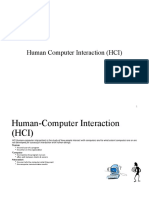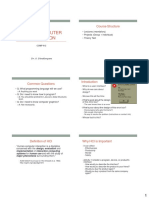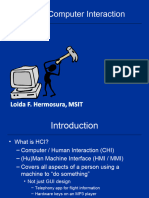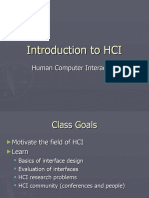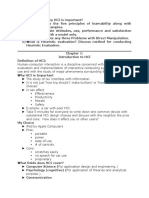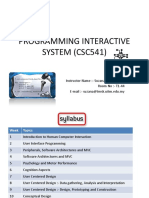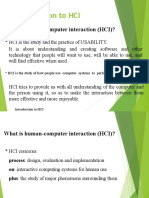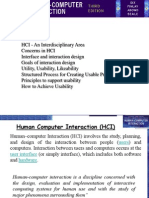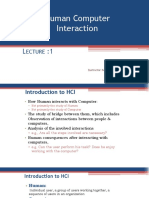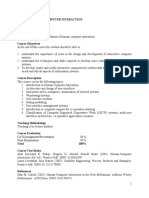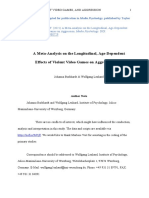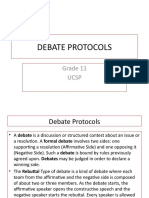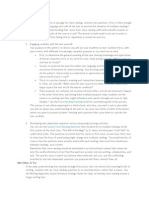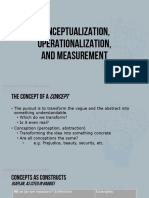0% found this document useful (0 votes)
14 views30 pagesIntroduction To HCI
The document provides an introduction to Human-Computer Interaction (HCI), covering its definition, measurement standards, motivations for research, and the importance of universal usability. It highlights the interdisciplinary nature of HCI, the transition to mobile and cloud computing, and the need for accommodating diverse user backgrounds and abilities. The goals for the HCI profession include influencing research, providing tools for designers, and raising public awareness about effective user interfaces.
Uploaded by
Training and Placement Cell -AmalapuramCopyright
© © All Rights Reserved
We take content rights seriously. If you suspect this is your content, claim it here.
Available Formats
Download as PDF, TXT or read online on Scribd
0% found this document useful (0 votes)
14 views30 pagesIntroduction To HCI
The document provides an introduction to Human-Computer Interaction (HCI), covering its definition, measurement standards, motivations for research, and the importance of universal usability. It highlights the interdisciplinary nature of HCI, the transition to mobile and cloud computing, and the need for accommodating diverse user backgrounds and abilities. The goals for the HCI profession include influencing research, providing tools for designers, and raising public awareness about effective user interfaces.
Uploaded by
Training and Placement Cell -AmalapuramCopyright
© © All Rights Reserved
We take content rights seriously. If you suspect this is your content, claim it here.
Available Formats
Download as PDF, TXT or read online on Scribd
/ 30



